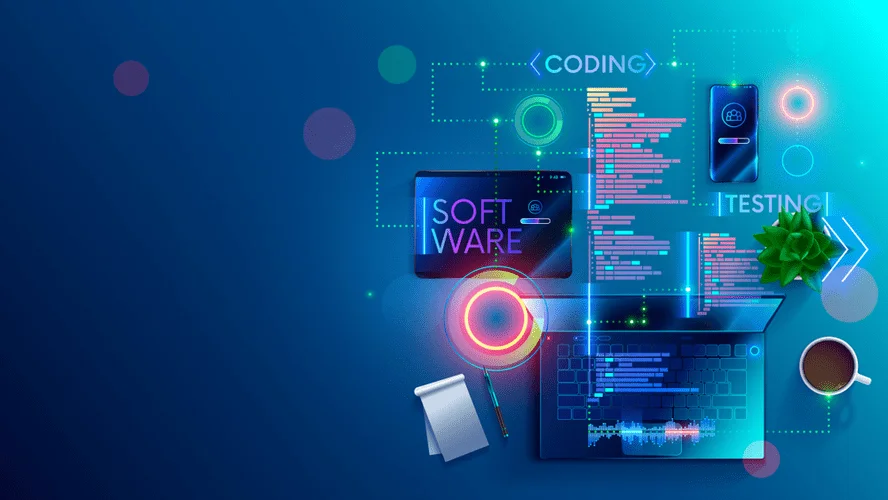One of the primary benefits is decreased latency by processing information closer to the supply. Cloud computing suffers from larger latency than fog computing as a result of data has to travel backwards and forwards from the data heart, which might https://innovacoin.info/what-i-can-teach-you-about-13/ take an extended time. In contrast, fog computing can process knowledge in real time, making it best for latency-sensitive applications. While fog computing has some advantages over cloud computing, it’s not likely to replace it completely. Fog computing is more environment friendly because data is processed closer to the supply, which reduces latency. It is also more secure because knowledge doesn’t should journey as far and is, therefore, much less prone to be intercepted.

Distinction Between Edge Computing And Fog Computing
In order to run efficiently, a sensible grid depends closely on real time information of electrical manufacturing and consumption. A downside of cloud computing is that all this computing over the network relies closely on data transport. However, unlike edge computing, fog computing typically does not happen on the identical gadget on which data is extracted or produced. In less complicated terms, whereas ‘edge computers’ are usually the identical devices that generate or gather knowledge, ‘fog computers’ are nodes which are physically close to but distinct from these edge computers.
Ask The Automation Execs: What Scan Time Is Needed For Course Of Management Applications?
Any enterprise that provides real-time options will need to incorporate fog computing into its existing cloud infrastructure. No matter the industry vertical, today’s enterprises see an outpouring of knowledge from customers. The web of issues (IoT) drives data-intensive buyer experiences involving something from smart electric grids to fitness trackers. Cloud computing and artificial intelligence allow for the dynamic processing and storage of those massive quantities of knowledge.
Distinction Between Cloud Computing And Fog Computing
Here, we will explore the key advantages of both applied sciences so that you just can differentiate cloud computing from fog computing and make an informed decision for your business. Among the main variations between these two forms of computing is their working environments. Cloud computing tends to work greatest in massive, centralized knowledge facilities or servers where services are delivered just about without any physical interplay.

Cloud Vs Edge Fog Computing: Features Compared

Fog Computing implements a decentralized Computing infrastructure primarily based on Fog Computing Nodes (FCN) placed between end-devices and a central system. FCNs are heterogeneous and are based on different varieties of hardware, including routers, switches, and entry factors. There are always several factors to take into account when choosing between edge, fog and cloud computing. They depend on sensors and cameras situated throughout the car to collect information and make selections about tips on how to navigate and operate the automobile. Fog computing is designed to work with a broad range of devices, including sensors, cameras, and different IoT gadgets.
- Whereas cloud computing relies closely on centralized servers and communication channels, Fog computing spreads resources extra evenly all through the network.
- The mannequin addresses the problem of maintaining consistency throughout distributed edge nodes, significantly with IoT devices.
- Overall, while each cloud and fog computing have their respective advantages, it may be very important fastidiously think about which model is finest suited in your explicit needs.
- It is also worth noting that cloud computing needs continual internet connectivity, however the other two may operate even without it.
- Hence the web and connectivity additionally play major roles in digital twin, and incorporating fog in digital twin makes the method robust.
Some even consider fog computing to simply be a Cisco model name for a type of edge computing. Below are the top 5 similarities between edge computing and fog computing. Edge computing and fog computing can both be outlined as technological platforms that convey computing processes nearer to the place knowledge is generated and picked up from. This article explains the two ideas in detail and lists the similarities and differences between them.

The objective of this article is to compare fog vs. cloud and inform you more about fog vs cloud computing prospects, in addition to their execs and cons. As a result, data for edge computing is processed on the sensor or system itself, somewhat than being sent elsewhere. In fog computing, on the opposite hand, data is processed within an IoT gateway or fog nodes which are a half of a LAN community.
However, edge computing can result in massive volumes of information being transferred directly to the cloud. Fog computing addresses this drawback by inserting a processing layer between the sting and the cloud. This way, the ‘fog computer’ receives the info gathered at the edge and processes it earlier than it reaches the cloud. As the name implies, edge computing happens exactly at ‘the edge’ of the applying network. In terms of topology, this means that an ‘edge computer’ is true next to and even on top of the endpoints (such as controllers and sensors) connected to the community.
In distinction, Fog computing distributes sources far more regionally, effectively bringing the processing energy nearer to the user. Edge computing brings processing and storage techniques as shut as potential to the appliance, system, or component that generates and collects data. This helps minimize processing time by removing the necessity for transferring data to a central processing system and back to the endpoint. As a outcome, information is processed more effectively, and the need for web bandwidth is reduced. This retains operating prices low and enables the use of purposes in distant areas which have unreliable connectivity.
The algorithm achieves a provable approximation ratio and demonstrates a 58.8% improvement in system throughput compared with baseline approaches. Extensive simulations validate the effectiveness of the proposed resolution in improving mannequin caching and routing performance in WSNs. End devices serve as the factors of contact to the real world, be it software servers, edge routers, end devices corresponding to cell phones and smartwatches, or sensors.